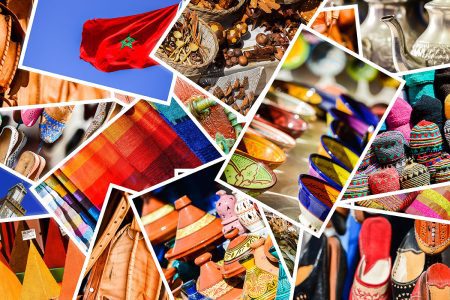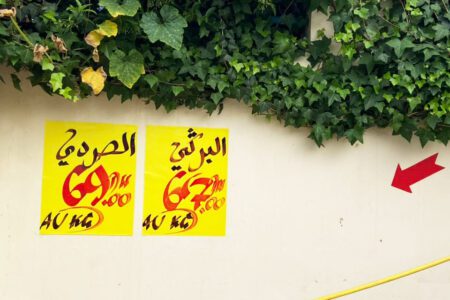Cheaper travel to Morocco: low-cost carriers are on their way
Morocco has finally signed the “open sky” agreement with the European Union. “Open skies” means the abolition of all nationality, frequency and origin quotas for airlines, and allows European airlines to sell tickets in Morocco and Europe.
Gone are the days of high-cost travel between Europe and Morocco, with differences of over €150 on a return trip depending on whether RAM was selling it from Morocco or Europe.
The first low-cost airline to establish itself is EasyJet, which from July 4 is offering a daily London-Marrakesh service for less than €40. Even if you add in the connection between France and London, you can finally get a return ticket for less than 100 euros! Institutional carriers such as Air France, Lufthansa and even Corsair will have to step up to the plate. And Royal Air Maroc is increasing the number of low-cost routes through its own low-cost airline, Atlas Blue.
Of course, the UK and France remain the preferred destinations for these routes. But Atlas Blue also offers flights from Italy and Belgium. And even from the second half of 2006, from Germany (for the record, in the low season, the cheapest tickets were sometimes offered by Lufthansa, from Frankfurt). And German operator TUI has bought a small airline, Jet4You, which, along with Corsair, will serve Marrakesh, Fez and Agadir.
Behind EasyJet, we can be sure that its competitor Ryanair will soon appear. And Hapag is finally offering trips to Marrakesh from Germany for around €50.
To take advantage of the best prices, you’ll need to set aside a few long hours on the Internet, checking the hubs (sites offering price comparisons, or agency portals), and also the airline sites directly. Price differences between different sites for the same flight (same company, same date) can be as much as 20%, without the logic of these prices being understood by the average person.
But with a bit of time, and by booking in advance, it is finally possible to come to Morocco for very low prices, and therefore … to come back often.
Planning your autumn trips
The Month of Ramadhan begins this year around 29 September. This is the holy month, the month of fasting and the month of charity. It is a special time in Morocco, when all Muslims fast from sunrise to sunset. Working hours are adjusted, and the breaking of the fast is a sacred moment when everything stops, smokers have their first cigarette of the day, and everyone gathers for breakfast, which traditionally begins with dates and whey, accompanied by pastries, eggs, coffee, tea and msamem.
It’s the only time of day when you won’t find anything open! Then the evening continues, with a real meal around midnight, and depending on tastes and habits, possibly an early snack before sunrise.
During Ramadhan, life goes on, and so does tourism. While everything is almost normal in the big cities, in the small villages of the south, you will be hard pressed to find anything during the day other than an omelette, which the waiter will bring you before giving up on you very quickly, so as not to suffer too much from temptation. And you gradually come to practise at least part of Ramadhan… all the more so as, having been cordially invited to share in the breaking of the fast, you realise within a few days that you need to cut back on your food rations.
Of course, moussems and celebrations are postponed until the end of Ramadhan. This is particularly important this year, as many of these moussems take place after the harvest. These include the date moussem at Erfoud, the clementine festival at Berkane, near Oujda, and the more religious moussem at Zawiya Sidi Salah.
If you’re planning to come on this date, bear in mind that these moussems will certainly be moved to the first or second weekend in November. But the Ramadhan period also has its charm, with the festive atmosphere that can be found every evening.
The opening of the ethical boutique
Behind this funny sounding name lies a new activity, in line with our fair tourism approach. For the same post, the price difference between Morocco and Europe is not only justified by transport costs. Transport costs that we can reduce, thanks to our many trips between the two countries. That’s why we’ve decided, along with a number of cooperatives and artisans, to bring their products to Europe and market them directly. It’s a win-win situation for you, as they cost less than in the shops, and it’s a win-win situation for them too, as their prices are much higher than if they went through wholesalers. The Oasis serves as a showcase and warehouse, and enables them to ship directly from Europe.
We now work with the Souktana cooperative, for safran from Taliouine, and with jewellers from Tiznit.
Cooking with saffron
Saffron is not just the yellow colour of tajines, risottos and paellas. For a very long time, saffron was the only indigenous spice in Europe, and every abbey, every presbytery, every estate had its own little saffron plantation, if it could afford it. Then, with the rise in labour costs and a number of diseases affecting the bulbs, saffron gradually disappeared from Europe, where it is now only really grown in Greece and Spain. But throughout this period, it was used in soups and cakes, and with meat and fish. Here are a few recipes to go with Taliouine saffron.
Electricity has arrived in Mezgarne
We’ve installed a small block that allows us to have electricity in the communal areas, toilets, showers and restaurant. No more showers by candlelight, we’re making things more comfortable for you! Under the tent, however, you’ll always have candlelight, or the light of the moon and stars through the woven woollen roof.
An Almohad marvel, the Kasbah of Tinmel
In the heart of the Middle Atlas, a few kilometres south-west of Marrakesh, in the Neffis valley, you’d think you were in Cathar country. In a steep valley, three rocky peaks, first a kasbah, then a mosque, a sober ochre brick building that blends into the landscape, and finally, further on, another kasbah. You’d think you were in Peyrepertuse or Queribus. But this is Tinmel, the mosque where Ibn Toumert is buried, the Mahdi who returned from his pilgrimage to Mecca convinced of the need to reform the decadent Almoravid sultans. In his fortress of Tinmel, he held them in check, and his successor, Abd al-Moumen ben Ali, managed to enter Marrakesh and oust the old dynasty.

Having fallen into ruin and oblivion, Tinmel, which houses the tomb of the Mahdi, is gradually being restored. A little off the beaten track, it is a sober and splendid building, whose pared-down architecture combines with the rugged grandeur of these mountains.
 A typo or syntax error? You can select the text and hit Ctrl+Enter to send us a message. Thank you! If this post interested you, maybe you can also leave a comment. We'd love to exchange with you !
A typo or syntax error? You can select the text and hit Ctrl+Enter to send us a message. Thank you! If this post interested you, maybe you can also leave a comment. We'd love to exchange with you !




